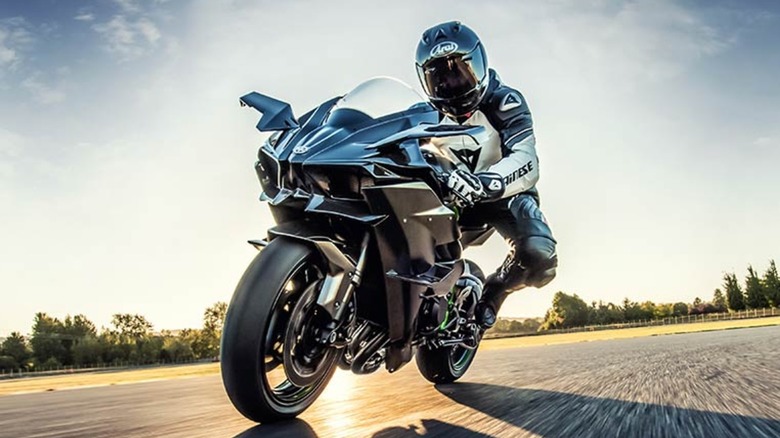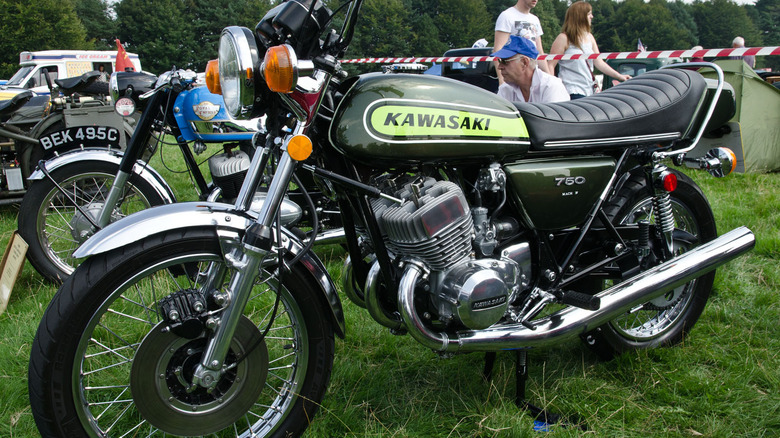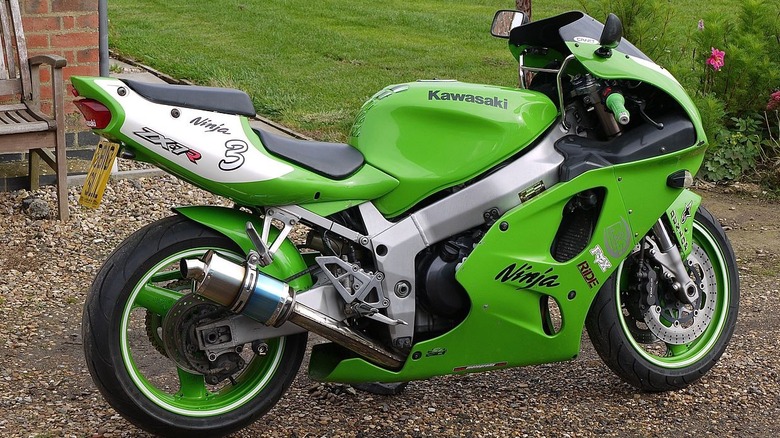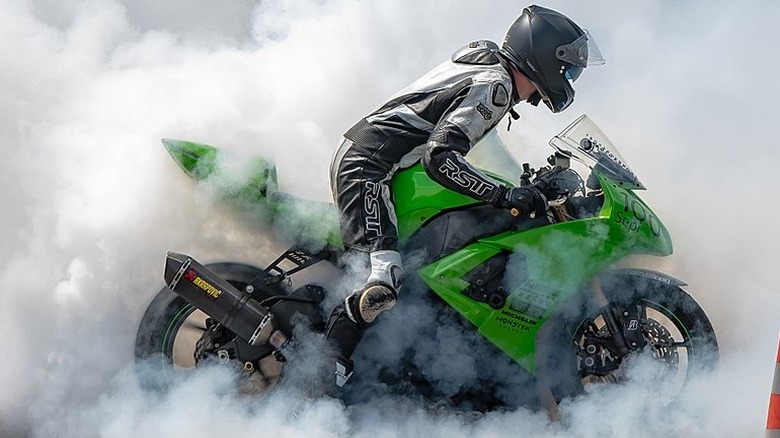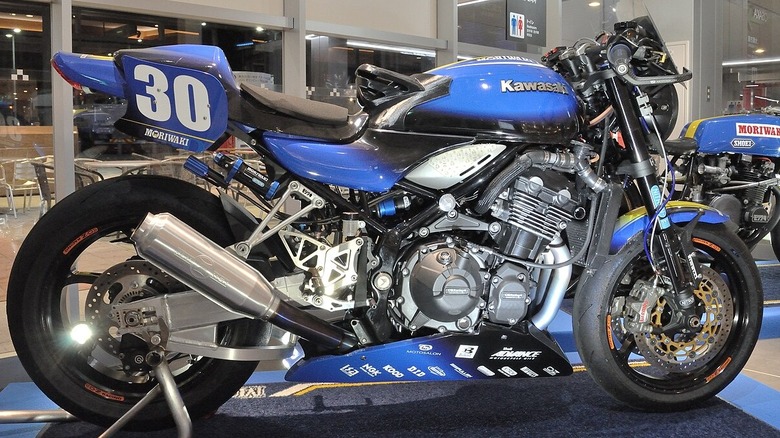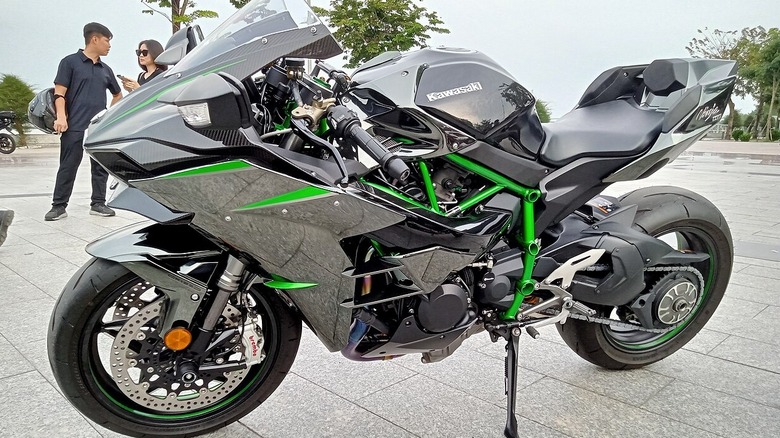5 Of The Best-Sounding Kawasaki Motorcycles Ever Built
Let's forget the spec sheet for a moment. Some Kawasaki motorcycles will go down in history not for their speed, but for their raw, loud, and addictive exhaust sounds. These Japanese performance bikes rank high for performance and sporting aesthetics. If you are a petrol head, you already know that sound is a huge part of what makes performance vehicles so enjoyable. In fact, many popular mods, such as cold-air intakes, bypass valves, and aftermarket exhaust systems, are primarily done to enhance engine sound.
The perfect motorcycle engine sound is a gray area, but most bike lovers agree nothing beats an in-line four screamer, two-stroke rasp, and perhaps the most popular — the V-twin growl. Seasoned bikers can tell what kind of engine a motorcycle is running just by its exhaust sound. But truthfully speaking, tailpipe acoustics go beyond performance.
When it comes to sound, not all Kawasakis are built equal. Therefore, to identify the best-sounding models, we focused on the one thing that'll leave a lasting impression on a petrolhead — exhaust character. As such, our criteria included the uniqueness of the tone, its impact behind the throttle (how it makes you feel), the quality of sound in stock form, and, perhaps most importantly, feedback from motorcycle enthusiasts.
Kawasaki H2 Mach IV 750 (1972)
The 1972 H2 Mach IV 750 was Kawasaki's answer to the Honda CB750K (not to be confused with the CR750). This Japanese bike isn't your average performance motorcycle — it's loved and feared in equal measure. This classic performance bike is a legend among enthusiasts and was the fastest production bike in 1972 (in stock form). The H2 Mach IV 750, a.k.a the "widowmaker," was as noisy as it was terrifying. It was so powerful for its era that during its launch in 1972, Kawasaki was quoted as saying, "only skillful riders need apply."
And while this term is often used loosely among performance vehicle circles, this classic Japanese performance bike got a bad rep for being unstable and dangerous. The Kawasaki H2 Mach IV 750 featured a two-stroke, 748cc air-cooled in-line three-cylinder engine that was capable of making 74 horsepower. This wasn't a bike for anyone. Its remarkable power-to-weight ratio made it exceptionally fast for its time, which also made handling a challenge, especially to inexperienced riders.
Its two-stroke triple gave it a raw, untamed beehive exhaust sound, especially at high rpm, earning it a cult following despite its unstable nature. Kawasaki upped both the torque and horsepower on this bike, exposing the limitations of chassis rigidity. They say, "What doesn't kill you makes you stronger." Except, the H2 Mach IV 750 will actually kill you if you lack experienced hands.
Kawasaki ZX-7R (1996-2003)
The Kawasaki ZX-7R was developed between 1996 and 2003 and featured a liquid-cooled 749cc inline-four engine paired with a six-speed transmission, capable of producing 122 horsepower and 58 lb-ft of torque, with a top speed of 166 mph. This Japanese sports bike was a firm favorite of its era and embodied '90s WSBK (World Superbike) tech, but for the streets.
The ZX-7R is part of Kawasaki's ZX-7 family, known for great-sounding motorcycles, and as you'd expect, it has a distinctive exhaust sound, particularly when equipped with an aftermarket exhaust. Although the stock sound is decent, many performance bike enthusiasts prefer the deeper, more aggressive sound produced with modifications like the Muzzy exhaust. The brutal sound of its internal gear shifts, filtered through the aftermarket exhaust, will get your fluids pumping fast. To get the best out of its sound delivery, the Kawasaki ZX-7R's engine needs to be revved at high rpm (peak power at 11,700 rpm) for that satisfying iconic howl.
Kawasaki Ninja ZX-10R (2011–2020)
The Ninja sport bike series from Kawasaki, as the name suggests, is a line of sports motorcycles from the Japanese motorcycle maker that features bikes renowned for their performance, handling, and sporty design. You'll find a mix of everything from entry-level models like the Ninja 400, track-ready street superbikes like the Ninja ZX-10R, or the ultra-performance Ninja H2.
The Kawasaki Ninja ZX-10R was released in 2004, succeeding the Kawasaki Ninja ZX-9R. Models released between 2011 and 2020 underwent significant updates featuring a new engine, chassis, and advanced electronics such as KECS (Kawasaki Electronic Control Suspension), an updated S-KTRC (Sport-Kawasaki Traction Control), and a quickshifter. The 2011-2020 line of the Kawasaki Ninja ZX-10R has WorldSBK Championship capability (track-ready) and featured a new high-revving 998cc inline-four engine capable of 197 hp with ram-air intake at 13,000 RPM (redline at 13,200 rpm).
For that addictive exhaust note, the Kawasaki Ninja ZX-10R featured a lighter, track-ready, less-restrictive exhaust and air filter (larger airbox). Add that to the quickshifter, and you'll enjoy the dramatic tones as you approach the redline. If you'd like a throatier and more aggressive exhaust tone, consider aftermarket options from aftermarket performance shops like Austin Racing or GPR.
Kawasaki Z900RS
In performance circles, both four-wheelers and two-wheelers – there's always a faction of members stuck in nostalgia, hence the saying, "they don't build them like they used to." If you are a performance bike enthusiast and share this ideology, then the Kawasaki Z900RS might be the perfect bike for you. In fact, it's been labeled by enthusiasts as the best modern homage to a vintage bike.
While the Kawasaki Z900RS is known to have a few common issues according to owners, it combines retro styling with modern bike tech and performance. This all-road motorcycle is the successor to the Kawasaki Z800. Besides the ZH2, the Z900RS is the flagship model of the Z series line of bikes and was released in 2018. This bike featured a liquid-cooled 948cc four-stroke four-cylinder engine delivering 111 horsepower at 8,500 rpm and 73 lb-ft of torque at 7,700 rpm.
For tailpipe acoustics, it features a factory-tuned exhaust that produces a deep rumble reminiscent of classic performance bikes. All iterations of the Z900RS come with a four-into-one howling exhaust system (chrome exhaust cladding). The Kawasaki Z900RS is one for the books thanks to its fusion of modern tech and classic bike exhaust sound. For that reason, there's no need for an aftermarket exhaust system.
Kawasaki Ninja H2/H2R
The Kawasaki Ninja H2 and H2R are generally considered fan favorites, not just for their tailpipe acoustics but for their striking design, powerful supercharged engine, and unique features. The H2 is the street-legal sibling of the track-only HR2. The latter is lighter, boasts more power, and features numerous aerodynamic enhancements. Additionally, the HR2 has a higher top speed compared to the H2. For that fact, the H2R is the fastest production motorcycle in the world. The HR2 is by no means a bike to get if you are struggling financially — the 2025 model has an MSRP of $59,100, and is the most expensive bike Kawasaki has on sale today.
Both the H2 and HR2 feature the same liquid-cooled 998cc supercharged four-stroke inline-four engine. However, the H2R churns out 321.5 horsepower and 121.5 lb-ft of torque compared to the standard H2, which makes 239.6 horsepower and 104.9 lb-ft of torque. It goes without saying that the Kawasaki Ninja H2/H2R will sound more brutal than your average performance bike – and more so because of the supercharger. The bikes have a distinctive, aggressive sound (unsilenced on the HR2) out of the 998cc engine, combined with a high-pitched whine from the supercharger.
